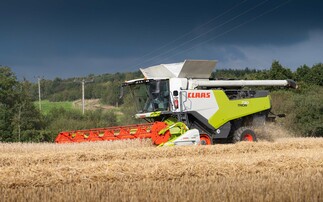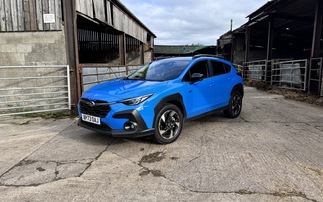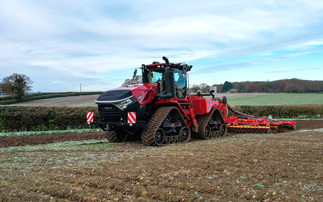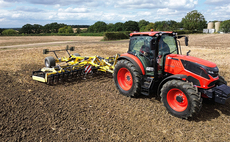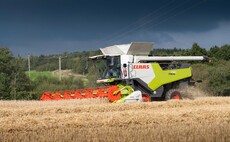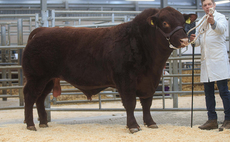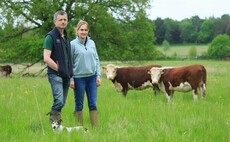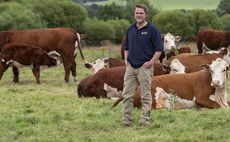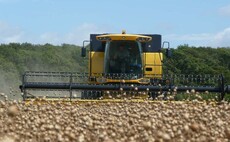
At Opico's UK launch, we got the opportunity to try out Strautmann's latest self-propelled mixer wagon. Richard Bradley reports.
UK machinery importer Opico is to broaden its equipment offering from Strautmann, with the addition of the firm's self-propelled mixer wagons.
Catering for a wide range of farms, eight models are available, ranging from the entry level Sherpa with 12 and 14 cubic metre capacities, featuring a single auger, up to the higher specification Verti-Mix SF single and twin auger models available in 11-20cu.m capacities.
At the launch we got the oportunity to head out with David Mein, Opico's technical support specialist for Strautmann products, to a German farm and try out a 17cu.m Verti-Mix 1702 SF Double.
Strautmann self-propelled mixer range at a glance

Powertrain
Providing drive to the mixer's hydraulic systems is a 6.8-litre, six-cylinder John Deere engine. The firm says the Deere unit was chosen as the availability of parts and servicing for the motor are available worldwide.
Six independent hydraulic systems, with a 370-litre tank are used, to ensure adequate oil flow and pressure is supplied to the machine, with two radiatiors keeping the system cool. While an electronic-reversing fan is not available as an option, the angle of fan-blades can be changed remotely to a similar effect and clear the radiator.
Hydraulics pic

Running gear
Providing a turning circle of 15-17 metres, SF mixers feature front-wheel steering, and rear wheel drive as standard.
Specifying four wheel steering allows this to be reduced massively to about 13m, which made the near 10m long twin-auger machine feel very manoeuvrable. Four-wheel drive can also be specified.
Leaf-spring suspension and a 25kph hydrostatic transmission are also standard fitment. However, if you are after additional speed and comfort, a 40kph version with air-suspension are. Braking is provided by drum brakes on each wheel.
Axle pic

Milling head
Removing silage from the clamp face, the two-metre wide milling head comes as standard with 60 cranked knives, which are arranged in a chevron pattern to transfer the crop onto the conveyor. To provide a more-effective chopping, an additional 54 straight knives can be specified.
When cutting clamped maize, the milling head left a smooth and compact face, which should help reduce secondary fermentation. A hydraulic folding guard covers the milling head when not in use, and a roller is lowered to rest the conveyor-arm on the chassis, preventing the head hitting the floor.
The head, which can reach up to 5.1m, is driven hydraulically, and powered down through the clamp via double-acting rams on the conveyor-arm. To prevent damage to the machine, an automatic system is featured, which slows arm movement if pressure in the milling head gets too high.
Preventing material dropping onto the floor, the head features a lower guard, which essentially forms a seal against the clamp face. The milling head, which features adjustable height floor rollers, can also be used to pick up spilt material or concentrates from the floor. Loading small volumes of ingredients, such as minerals, can be done through an opening flap on the conveyor-arm.
Milling head pic

Clamp cutting pic
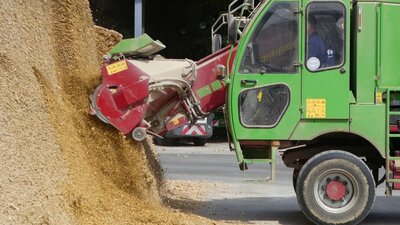
Milling head quickly cuts away the clamp face
Clamp face pic
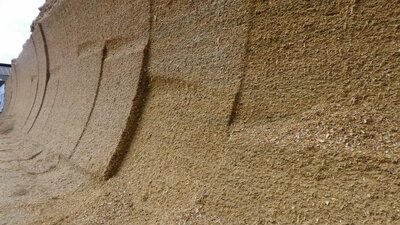
and leaves a clean cut, reducing secondary fermentation.
Tub and augers
Material is then transferred into the mixing tub via a hydraulically-driven rubber conveyor. Belt speed can be adjusted to throw the crop further into the feeder, particularly useful when working with heavy grass silage, for example.
Inside the tub, Strautmann's stepped-augers are fitted, which the firm says speeds up mixing time and reduces power requirement by up to eight per cent. Auger drive is hydraulic, meaning speed can be adjusted via the multifunction joystick - very handy for greater control of mixing and feed-out rates.
To ensure both augers rotate at the same speed on twin-auger models, a shaft is used to transfer drive to the rear auger. To reduce auger wear, stainless steel wear strips can be specified as an option, which at £527 per auger, is a small price compared to a replacement auger.
Emptying the SF is via a front-mounted cross-conveyor, which can side-shift to one side, which, thanks to hydraulic drive, speed can be adjusted through the joystick. Side and rear doors can also be specified, as can a rear-mounted cross conveyor.
Auger pic
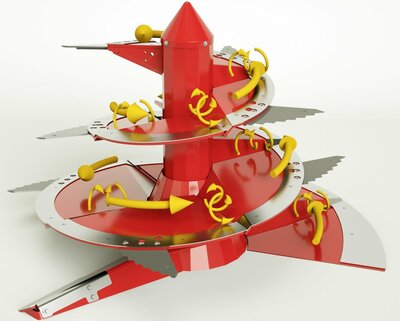
Cab
At first glance, the cab looks a touch cramped, however, once inside things feel different. The multifunction controller falls easily to hand, which, along with the touch-screen terminal, looks after all machine functions and settings. While we can see cab space is limited, mounting the joystick to the air-suspended seat would be a convenient feature.
Access into and out of the cab is decent, but folding steps, as used on some self-propelled sprayers, for example, would be a nice addition.
Thanks to a curved windscreen with lower and upper wipers, views of the milling head are good from floor level up to its maximum height. Heated mirrors are fitted, with the offside mirrors able to fold within the machine's width. A reversing camera is also standard, and a camera overlooking the tub can be specified.
Road lighting is standard, as are two front and two rear work lights. Two additional rear lights can be specified, as can lights either side of the cross-conveyor, and inside the tub.
Cab pic
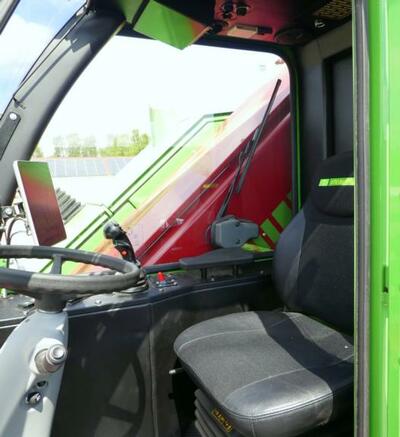
Controls
The multifunction controller falls easily to hand, which, along with the touch-screen terminal, looks after all machine functions and settings. While we can see cab space is limited, mounting the joystick to the air-suspended seat would be a convenient feature.
Operating the machine is done in three modes, controlled via the hand-throttle; transport, mill and discharge.
- Transport mode sees the hand throttle in idle position, with the foot pedal looking after revs and forward speed. In this mode engine revs are limited to 1,500rpm, but the machine's top speed can still be achieved.
- Mill mode is engaged once the hand-throttle is pushed, allowing the engine to rev up to its maximum 1,800rpm for full power, but limits forward speed to 8kph for greater control - milling head is not engaged until the safety switch and joystick are used.
- Flicking a switch changes from mill to discharge mode, providing a top speed of 15kph and allowing the cross-conveyor and doors to be used for feed out.
After a short introduction to the controls, the SF is fairly logical to operate. Changing between modes via the hand throttle and switch is relatively simple, however, we believe it could be simplified further by using a single switch to change between the modes, with a system to increase engine revs to match workload, similar to a modern excavator, for example.
Controls pic
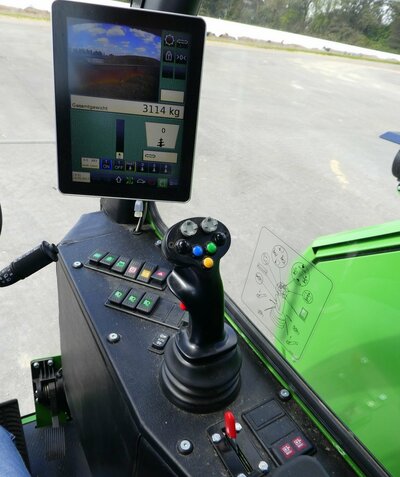
Purchasing and maintenance
Due to the 365 days a year workload of the machines, Opico says they will be sold via serviced contract hire for a term of three, four or five years - at the end of the term the operator can purchase the machine or renew the contract with a new machine.
Included in this will be a four year warranty and a full service and maintenance package for the life of the machine. Wearing parts, including tyres and blades, will not be covered however.
Opico says, this should offer owners piece of mind, as the machine is regularly maintained and checked over by approved engineers, meaning they do not need to spend time doing the work themselves.
Verdict
Strautmann's self-propelled Verti-Mix looks to be a well-specced machine with efficient forage cutting and ingredient mixing performance, and with four-wheel steering that producers with a tight buildings layout will appreciate in particular.










